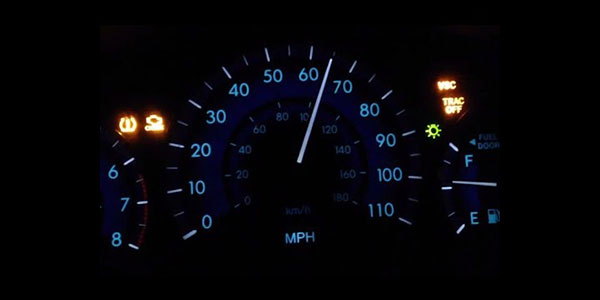A loose gas cap, for example, might cause the Toyota Sienna Check Engine Light Vsc Trac Off, It can also signal a variety of other problems, such as defective spark plugs, faulty oxygen sensors, filthy mass airflow sensors, and even a transmission problem early on.
This guide will learn about common problems that trigger Toyota Sienna check engine lights and how to diagnose Toyota check engine lights yourself using an OBD2 scanner.

Let it make sure that Vsc and Trac off with engine light on is indicating that your vehicles have an issue that has to be fixed.
Common symptoms that you may notice include:
- Engine runs rough
- Traction Light or VSC Light comes on.
- Check Engine Light flashes when accelerating.
- Engine misfires or shakes
- Lack of power
- Poor throttle response
How to Recognize and Fix a Toyota Sienna Check Engine Light?
- Locate the OBD2 port under the dashboard.
- Plugin your OBD2 scanner. Turn on the ignition but do not start the engine.
- Please turn on the scanner and let it communicate with the car—Select Read Codes from the main menu.
- Press enter and fault codes will display on the screen. Scroll to see all the codes. Make sure to check the Current, Pending, and Permanent codes.
Other Common Problems
- Spark Plugs or Ignition Coil: If you don’t change your Toyota spark plugs at this period, they’ll ultimately wear out and turn on the check engine light.
Toyota vehicles require spark plugs to be changed between 90,000 and 120,000 miles.
2. Mass Air Flow Sensor: If you have a rough idle, lack of power, or hesitancy when accelerating, your engine is probably running low. Mass airflow sensors are included in nearly all Toyota engines.
A misleading reading from a dirty MAF sensor is another common issue.
Code against this malfunction – Code: P0171.
3. Gas Cap: Check the engine light on Toyota Camry, Corolla, Sienna, 4Runner, Highlander, Matrix, Avalon, Rav4, etc., can come on if you don’t tighten the gas cap.
Check that you have installed the gas cap.
If the gas cap is installed, tighten it. The check engine light will not turn off immediately.
It can take up to three days for it to reset on its own.
4. Oxygen Sensor: If you drive a Toyota with higher mileage, you’re more likely to have a check engine light caused by emission control issues.
Despite the fact that this is marked as a low-efficiency catalytic converter, you might simply have a malfunctioning downstream o2 sensor.
Codes: P0420 to P0431.
5. Vehicle speed sensor failure: This will turn on the check engine light, as well as the ABS, TC, and cruise lights.
However, a malfunctioning speedometer indicates an issue with the vehicle’s speed sensor.
The sensor is placed on the output side of the gearbox.
6. Crankshaft position sensor: If you are experiencing a sporadic crank without a start situation, or your Toyota cuts out without any apparent reason, you might have a bad crankshaft position sensor.
7. Timing Chain: A stretched timing chain can cause the check engine light to illuminate on Toyota Camry, 4Runner, and Highlander models with V6 engines.
Despite being meant to last a lifetime, they are susceptible to overstretching and tensioner failure.
Codes: P0012 and P0014.
8. Crankshaft position sensor: A faulty crankshaft position sensor might be the cause of occasional crank without a start or your Toyota cutting off for no apparent reason.
Code: P0335.
Why is my Check Engine and Trac off light on?
This indicator illuminates when the computer detects a potential problem with the traction control system. The traction control system monitors the vehicle’s steering and stability and activates when traction is lost.
Conclusion
I am summarizing all the bullets with little explanation specific to Toyota sienna models from 2008 to 2013, 2014, and 2015 to 2020 models.
- The “Trac Off” light typically indicates that the vehicle’s traction control system has been deactivated. This can occur due to a malfunction within the system or as a result of the driver intentionally turning the system off.
- The “Check Engine” light can indicate a wide range of issues, from a loose gas cap to a major mechanical problem. Common causes include a faulty oxygen sensor, a malfunctioning mass air flow sensor, or an issue with the vehicle’s emissions control system.
- In both cases, it is recommended to have the vehicle diagnosed by a professional mechanic to determine the specific cause of the warning lights and address any necessary repairs.
